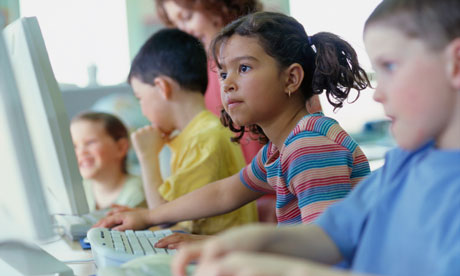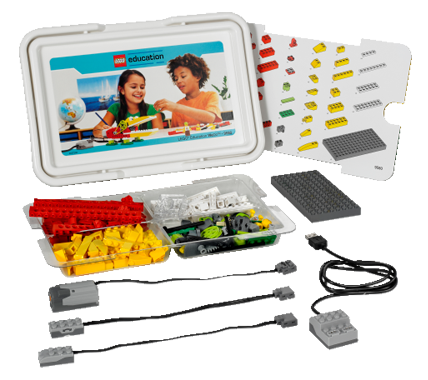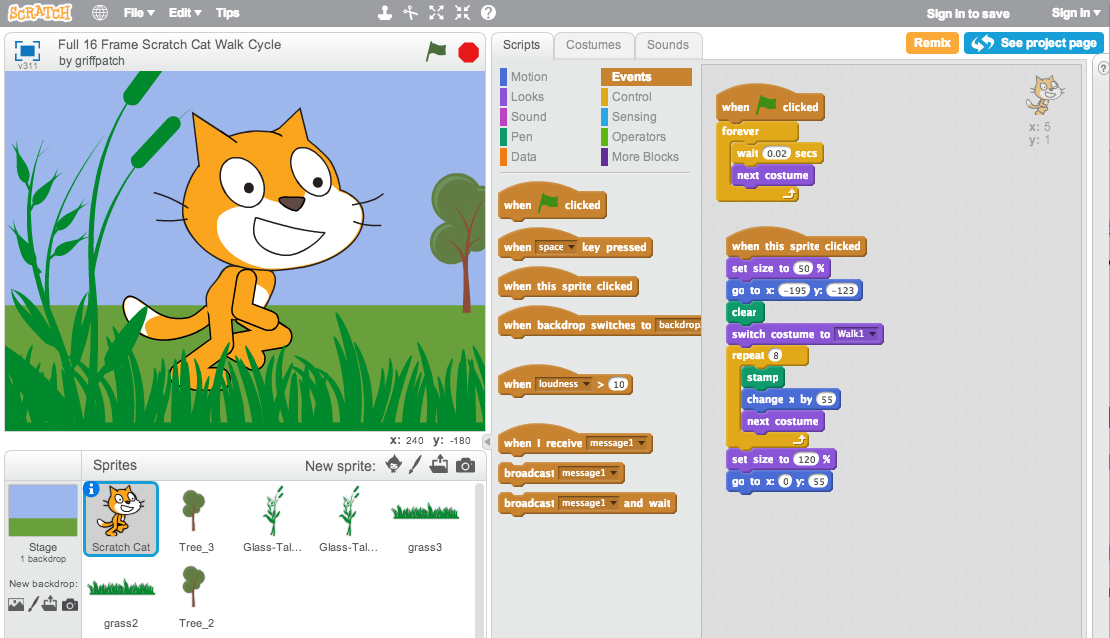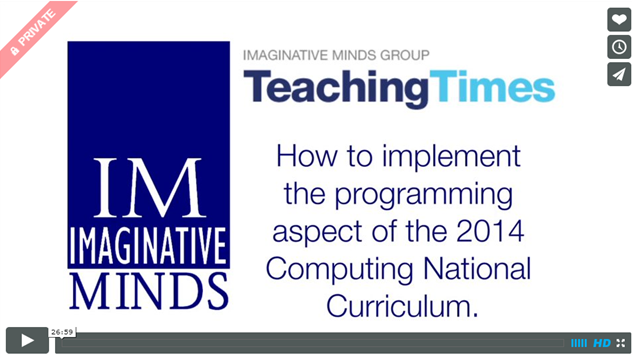There's been a lot of debate surrounding the new curriculum and uncertainty over how it will be taught. In response to these new concerns, we’ve teamed up with Chris Thomas from Studyzone to put together 7 training videos, packed full of practical advice to help you make the most of digital technology.
The videos cover topics such as:
- implementing the new computing curriculum
- making more of mobile devices in the classroom
- using technology to improve formative assessment
- stimulating learning through the use of multimedia.
They're just like attending a professional development course, but in the comfort of your own living room!
The videos are free to subscribers of e-Learning Update, but this first video and accompanying article are available for everyone to read and view for free! In it and its accompanying article below, Chris explores the basics of programming - a major feature of the new computing curriculum - and two tools that will make teaching it a lot simpler.
Link: http://vimeo.com/92824236
Password: teachingtimes1
Subscribe to e-Learning Update here - for 8 online issues per year + unlimited access to all past issues + access to our 7 professional development videos.
Chris Thomas - Studyzone.tv

- Some use it to refer to an extension of a lesson: 'Let's type our stories up in ICT'.
- Others use it to refer to equipment: 'How are you using ICT in your lesson?'
- Some use it to refer to an explicit subject: 'This afternoon we're doing ICT'.
However, even as an isolated subject, the muddying of the term has resulted in less and less explicit teaching of computing skills.
By replacing ICT with ‘Computing’, a clear message is being sent to schools; here is a brand new subject which demands a brand new focus - the teaching of computing skills and, in particular, computer science. But where does this leave teachers who have always presumed computer science to be an A-level subject, or even a degree?
Talk of 'algorithms', 'variables' and the need for 'simulating physical systems' will no doubt fill many teachers with fear - but it needn't.
The new primary computing curriculum can be broken up into three main areas:
- Computer Science (let's call this ‘programming')
- Information Technology (let's say 'how things work’)
- Digital Literacy (let's say 'using software purposefully’)
For experienced teachers, Digital Literacy will feel very much like the ICT we are used to and will include skills on using Office applications, searching for information and e-safety.
Information Technology requires children to have a basic understanding of how computer networks and computer systems work, but note the word 'basic'. These are both important areas of the new curriculum, but very much the focus is on programming.
How to get started
The key to getting started with computer programming is to dispel the myth that it is incredibly complicated and to gain an understanding of some of the terms used in the curriculum. Take 'algorithm' as an example. This is nothing more than a sequence of instructions, such as 'move forward, turn left, pick up cup' etc. The easiest way of teaching this to children isn't in the computer room and it's not through tablets or with expensive software; it's through fun 'instruction based' role-play in the classroom.
Have students instruct their partner to 'put on a pair of socks', 'make a glass of squash' or 'make a jam sandwich'. Through the hilarity that ensues, students will be learning four of the most important programming concepts:
- Precision is key; whatever the instruction, it will happen.
- One event can cause (or trigger) another.
- When things go wrong, there is a need to 'debug', which means to break the problem down and identify what went wrong, why and how it should be fixed.
- When it works, it can be repeated time and time again.
These skills will develop and grow as students become more skilful programmers.
Writing your first program
Once your students have started to understand the basics of what an instruction is and how one thing can cause another, they can write their very first computer program. Don't be put off thinking they now need to make a huge leap into a strange programming language made up of ones and zeroes, or technical terms; nowhere in the new curriculum does it mention specific programming languages that should be used. Instead, there is a range of software available that allows students to 'drag and drop' blocks of code into a sequence to create their own programs.
In the video that accompanies this article we'll explore two such tools; Lego Wedo and Scratch.
Lego Wedo

robotics is that students will immediately see the impact of their programming in real life, helping to bridge the gap between 'virtual' code and 'real life' systems.
The basic kit comes equipped with two sensors and a single motor to be used as input and output devices respectively. By combining values from the sensors with commands to turn the motor, basic scenarios can be created. When combined with an understanding of loops, students will have developed the building blocks of how computer programs work. Find out how to get started with Lego Wedo in the video that accompanies this article.
Scratch

As with Lego Wedo, all of this is achieved without writing a single line of code; programming blocks are simply dragged and dropped into place to create sequences of code. The video that accompanies this article explains how to get started with Scratch programming.
Moving Forward
As I hope you have seen, computer programming needn't be something we fear. By using the right tools it is possible to create complex programs without writing a single line of code. Does this matter though? Are students really learning to program if they're not writing any code? I believe so.
The greatest gains to be had in teaching programming will not come through students being able to recall countless programming terms, but instead will be through developing students to think as programmers.
One of the most exciting opportunities that the new computing curriculum offers is that of developing the way students approach problems.
- Do they think logically?
- Do they break large tasks up into achievable, smaller tasks?
- Do they look to find mistakes in their work and fix them?
- Do they have resilience when things don't work first time?
- Can they work as a team?
Computer programming can help develop all of these skills and the benefits will be felt across the curriculum.
